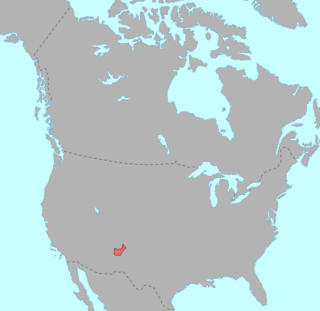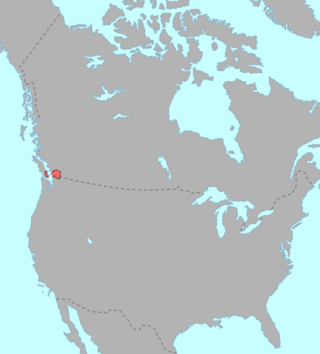Related Research Articles

In phonology, an allophone is one of multiple possible spoken sounds – or phones – used to pronounce a single phoneme in a particular language. For example, in English, the voiceless plosive and the aspirated form are allophones for the phoneme, while these two are considered to be different phonemes in some languages such as Central Thai. Similarly, in Spanish, and are allophones for the phoneme, while these two are considered to be different phonemes in English.
Portuguese dialects are the mutually intelligible variations of the Portuguese language in Portuguese-speaking countries and other areas holding some degree of cultural bond with the language. Portuguese has two standard forms of writing and numerous regional spoken variations, with often large phonological and lexical differences.

Some of the regional varieties of the Spanish language are quite divergent from one another, especially in pronunciation and vocabulary, and less so in grammar.
English phonology is the system of speech sounds used in spoken English. Like many other languages, English has wide variation in pronunciation, both historically and from dialect to dialect. In general, however, the regional dialects of English share a largely similar phonological system. Among other things, most dialects have vowel reduction in unstressed syllables and a complex set of phonological features that distinguish fortis and lenis consonants.
Tumbuka is a Bantu language which is spoken in Malawi, Zambia, and Tanzania. It is also known as Chitumbuka or Citumbuka — the chi- prefix in front of Tumbuka means "in the manner of", and is understood in this case to mean "the language of the Tumbuka people". Tumbuka belongs to the same language group as Chewa and Sena.

Keres, also Keresan, is a Native American language, spoken by the Keres Pueblo people in New Mexico. Depending on the analysis, Keres is considered a small language family or a language isolate with several dialects. The varieties of each of the seven Keres pueblos are mutually intelligible with its closest neighbors. There are significant differences between the Western and Eastern groups, which are sometimes counted as separate languages.

Halkomelem is a language of various First Nations peoples of the British Columbia Coast. It is spoken in what is now British Columbia, ranging from southeastern Vancouver Island from the west shore of Saanich Inlet northward beyond Gabriola Island and Nanaimo to Nanoose Bay and including the Lower Mainland from the Fraser River Delta upriver to Harrison Lake and the lower boundary of the Fraser Canyon.
The sound system of Norwegian resembles that of Swedish. There is considerable variation among the dialects, and all pronunciations are considered by official policy to be equally correct – there is no official spoken standard, although it can be said that Eastern Norwegian Bokmål speech has an unofficial spoken standard, called Urban East Norwegian or Standard East Norwegian, loosely based on the speech of the literate classes of the Oslo area. This variant is the most common one taught to foreign students.
In English, the digraph ⟨th⟩ represents in most cases either one or the other of two phonemes: the voiced dental fricative and the voiceless dental fricative. Occasionally, it stands for or the cluster. In compound words, ⟨th⟩ may be a consonant sequence rather than a digraph.

Plains Cree is a dialect of the Algonquian language, Cree, which is the most populous Canadian indigenous language. Plains Cree is considered a dialect of the Cree-Montagnais language or a dialect of the Cree language that is distinct from the Montagnais language. Plains Cree is one of five main dialects of Cree in this second sense, along with Woods Cree, Swampy Cree, Moose Cree, and Atikamekw. Although no single dialect of Cree is favored over another, Plains Cree is the one that is the most widely used. Out of the 116,500 speakers of the Cree language, the Plains Cree dialect is spoken by about 34,000 people primarily in Saskatchewan and Alberta but also in Manitoba and Montana.
The Sikkimese language, also called Sikkimese, Bhutia, or Drenjongké, Dranjoke, Denjongka, Denzongpeke and Denzongke, belongs to the Tibeto-Burman languages. It is spoken by the Bhutia in Sikkim, India, and in parts of Koshi, Nepal. It is the official language in Sikkim. The Sikkimese people refer to their own language as Drendzongké and their homeland as Drendzong. Up until 1975, Sikkimese was not a written language. After gaining Indian statehood, the language was introduced as a school subject in Sikkim and the written language was developed.

Hejazi Arabic or Hijazi Arabic (HA), also known as West Arabian Arabic, is a variety of Arabic spoken in the Hejaz region in Saudi Arabia. Strictly speaking, there are two main groups of dialects spoken in the Hejaz region, one by the urban population, originally spoken mainly in the cities of Jeddah, Mecca, Medina and partially in Ta'if and another dialect by the urbanized rural and bedouin populations. However, the term most often applies to the urban variety which is discussed in this article.
The phonology of Bengali, like that of its neighbouring Eastern Indo-Aryan languages, is characterised by a wide variety of diphthongs and inherent back vowels.

The Ovambo language is a dialect cluster spoken by the Ovambo people in southern Angola and northern Namibia, of which the written standards are Kwanyama and Ndonga.
The phonology of Sesotho and those of the other Sotho–Tswana languages are radically different from those of "older" or more "stereotypical" Bantu languages. Modern Sesotho in particular has very mixed origins inheriting many words and idioms from non-Sotho–Tswana languages.
Woods Cree is an indigenous language spoken in Northern Manitoba, Northern Saskatchewan and Northern Alberta, Canada. It is part of the Cree-Montagnais-Naskapi dialect continuum. The dialect continuum has around 116,000 speakers; the exact population of Woods Cree speakers is unknown, estimated between 2,600 and 35,000.
Ottawa is a dialect of the Ojibwe language spoken in a series of communities in southern Ontario and a smaller number of communities in northern Michigan. Ottawa has a phonological inventory of seventeen consonants and seven oral vowels; in addition, there are long nasal vowels the phonological status of which are discussed below. An overview of general Ojibwa phonology and phonetics can be found in the article on Ojibwe phonology. The Ottawa writing system described in Modern orthography is used to write Ottawa words, with transcriptions in the International Phonetic Alphabet (IPA) used as needed.
This article covers the phonology of modern Colognian as spoken in the city of Cologne. Varieties spoken outside of Cologne are only briefly covered where appropriate. Historic precedent versions are not considered.

Ute is a dialect of the Colorado River Numic language, spoken by the Ute people. Speakers primarily live on three reservations: Uintah-Ouray in northeastern Utah, Southern Ute in southwestern Colorado, and Ute Mountain in southwestern Colorado and southeastern Utah. Ute is part of the Numic branch of the Uto-Aztecan language family. Other dialects in this dialect chain are Chemehuevi and Southern Paiute. As of 2010, there were 1,640 speakers combined of all three dialects Colorado River Numic. Ute's parent language, Colorado River Numic, is classified as a threatened language, although there are tribally-sponsored language revitalization programs for the dialect.
Värmländska refers to the indigenous speech varieties of the traditional Swedish province of Värmland. It is one of the dialects that form the group Götamål, as opposed to Sveamål, South Swedish dialects, Norrland dialects, Gutnish and Finland-Swedish dialects, in an often used classification of Swedish dialects.
References
- ↑ Kwambi at Ethnologue (18th ed., 2015) (subscription required)
- ↑ Jouni Filip Maho, 2009. New Updated Guthrie List Online
- ↑ Dammann, Ernst (1975): Die Übersetzung der Bibel in afrikanische Sprachen, page 236
- Dammann, Ernst (1962): Zur Kenntnis der Kwambi. In Afrika und Übersee vol.46, pp. 200–203.
- Fourie, David J. (1994): Kwambi subject, object and possessive concords. In South African Journal of African Languages, vol 14:2, pp. 59–61.
- Magnusson, Lars (2003): The Wambo dialect Kwambi as compared to Ndonga. Unpublished manuscript, Oshakati: University of Namibia.
- Wisskirchen, Anton (1935): Grammatik der Otshikwambi-Sprache. Unpublished manuscript, Ombalantu.